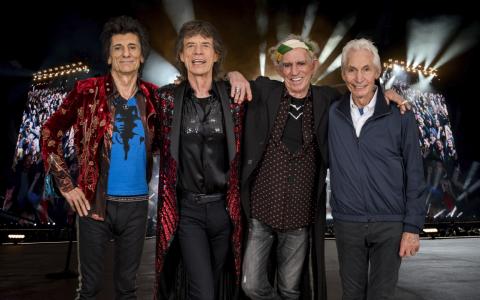
It’s real. The generational pivot is happening before our eyes and the marketing approaches that dominated the wealth management industry for decades get one last strut across the stage.
Jackson National Life made the genius marketing move of the decade sponsoring a national tour of Rolling Stones memorabilia.
After all, Mick Jagger and his biggest fans want to think they’re still angry young kids who will live for ever. But in reality, anyone who’s interested enough in the band to go see their guitars and stage costumes is either retired or on the brink.
They’re the perfect age to hear about lifetime annuity products. And from now on, every passing year takes Rolling Stones fans out of that demographic sweet spot.
Wealth managers have been bracing for this moment for most of their professional lives. Now that the generational handoff is at hand, let’s see who’s actually ready to take advantage of the marketing window while it’s open.
All about the Stones
Mick Jagger and Keith Richards turn 75 later this year. Drummer Charlie Watts is already 76 and many of the relative “kids” like Ron Wood who tour with the band are well past traditional retirement age themselves.
The Baby Boom that grew up with them is only a little younger. About half of the cohort is between 63 and 72. The rest are in the classic “pre-retirement” planning push period, with kids out of school, mortgages mostly paid off and nothing between them and the finish line.
All in all, maybe 40 million Boomers are still in a place where buying annuities in the foreseeable future makes sense. If they’re also Rolling Stones fans, Jackson National Life has a captive audience here ready to digest the strong points of the brand and the product line.
Get serious: this two-year sponsorship is probably wrapping up at the right time. A year from now, the generational bar moves deeper into retirement territory. People coming out to see Stones stuff will be more likely to already have income programs in place. Wait another decade, and a Mick Jagger annuity tie-in just won’t make statistical sense.
It’s not about sentimentality or even slamming an aging band. It’s just about the hard ROI calculations of who’s in your target market and how relevant they find various pop culture phenomena.
Granted, the Stones are still enough of a name to gross around $10 million per concert, even though they’ve slowed down to the point where they only do 5-15 shows a year. Within their crowd, they remain the biggest band in the world.
But while their current tour spotlights a few recent tracks, the set list is dominated by hits that came out at least 40-45 years ago on average. If “Tumbling Dice” and “Missing You” remind you of your teens, you’re in your mid-50s.
Again, that’s prime age for a long annuity brand awareness effort. A decade later is too late. On the other hand, the messaging would probably have come too early even a few years ago.
Pivot toward accumulation
Most ground-level wealth managers can read the lesson loud and clear. If you’re selling retirement income products to Boomers, the systems you’re using will probably work well for another 4-5 years before you start to see diminishing returns.
For advisors who themselves plan to retire around that point, it’s not a bad horizon. Just lock in the trailing fees on the accounts when you’re ready to go. Your clients’ annuities become your de facto retirement income stream as well.
And if you have longer-term ambitions, this is the wake-up call that the industry that grew up around the Boomers is approaching the critical mass that foreshadows massive shifts ahead.
The Millennials are younger and earlier in their accumulation cycle, but there are already more of them than there were ever Boomers to chase. If they end up with a reasonable pool of assets, they’re worth somebody stepping up to help them invest that money.
We know that at least some people in this “echo boom” generation are going to be getting a little cash when the Boomers make their last transition out of retirement and distribute their estates.
That $30 trillion in cross-generational wealth transfers we’ve been anticipating for years is actually coming true now. When it happens, those who want to capture a slice — or keep what they have — are going to need to be able to talk to the heirs.
My guess is that they’re not really going to connect to the more “recent” Rolling Stones hits from their 1970s arena era. The retirement product wholesalers of tomorrow are going to need to come up with other hooks that resonate with that audience.
We’re pivoting to catch that audience and make sure that when the time comes, they know they have better options than cold robot portfolios. Whatever form the industry takes, it’s going to need to be responsive to their generational mindset.
Will they prioritize retirement? How much risk will they accept? What’s the shape of their lifetime “glide path?” Those of us who want to be in the industry a decade from now will find out.
But now, the Boomers are literally in their golden age. The things they loved as children remain relevant to the economic mainstream. Their decisions play the tune that makes trillions of dollars dance.
And they're nearing the end of their accumulation cycle. Time to roll out the income products.



